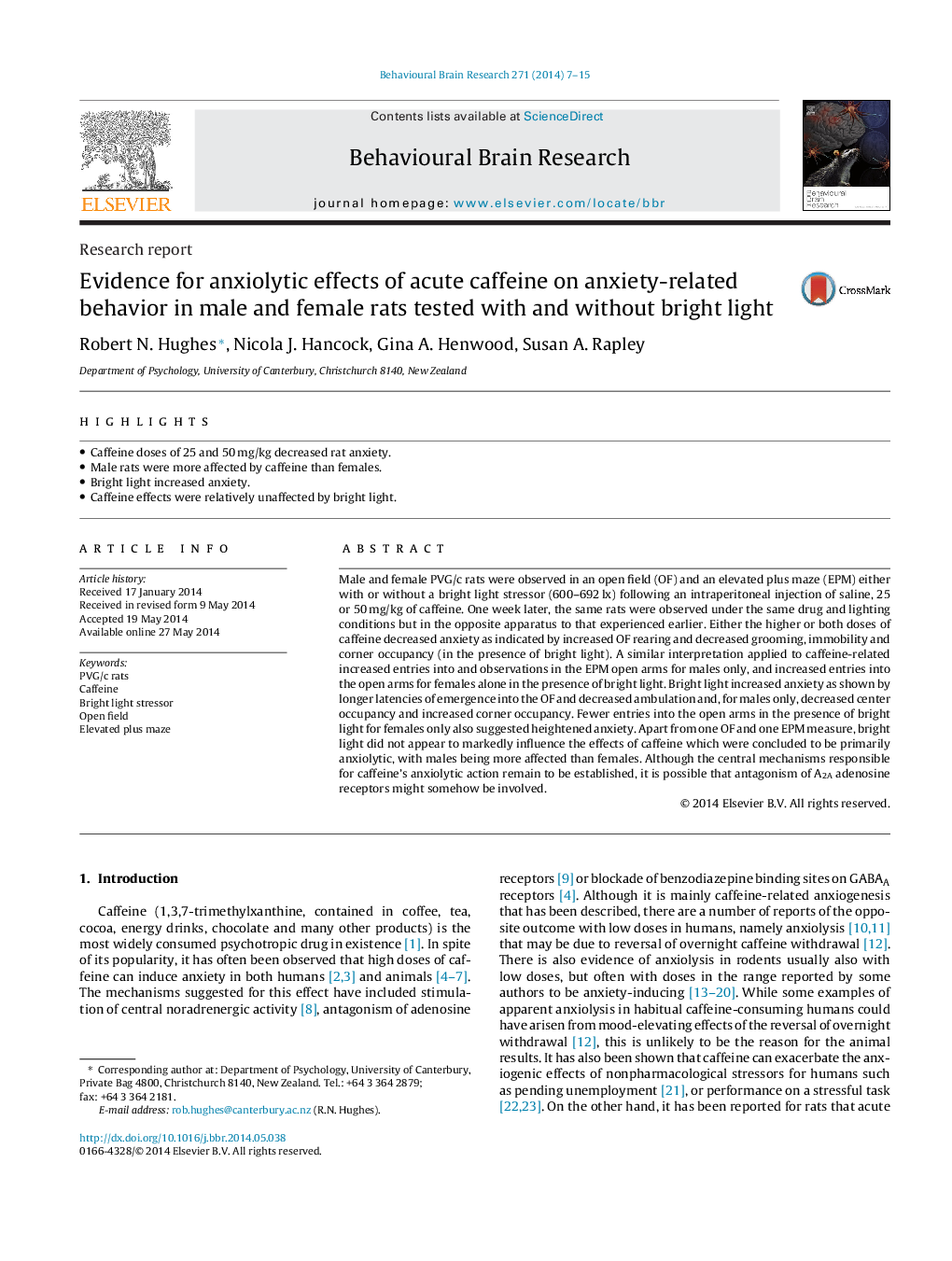| Article ID | Journal | Published Year | Pages | File Type |
|---|---|---|---|---|
| 6257992 | Behavioural Brain Research | 2014 | 9 Pages |
â¢Caffeine doses of 25 and 50 mg/kg decreased rat anxiety.â¢Male rats were more affected by caffeine than females.â¢Bright light increased anxiety.â¢Caffeine effects were relatively unaffected by bright light.
Male and female PVG/c rats were observed in an open field (OF) and an elevated plus maze (EPM) either with or without a bright light stressor (600-692Â lx) following an intraperitoneal injection of saline, 25 or 50Â mg/kg of caffeine. One week later, the same rats were observed under the same drug and lighting conditions but in the opposite apparatus to that experienced earlier. Either the higher or both doses of caffeine decreased anxiety as indicated by increased OF rearing and decreased grooming, immobility and corner occupancy (in the presence of bright light). A similar interpretation applied to caffeine-related increased entries into and observations in the EPM open arms for males only, and increased entries into the open arms for females alone in the presence of bright light. Bright light increased anxiety as shown by longer latencies of emergence into the OF and decreased ambulation and, for males only, decreased center occupancy and increased corner occupancy. Fewer entries into the open arms in the presence of bright light for females only also suggested heightened anxiety. Apart from one OF and one EPM measure, bright light did not appear to markedly influence the effects of caffeine which were concluded to be primarily anxiolytic, with males being more affected than females. Although the central mechanisms responsible for caffeine's anxiolytic action remain to be established, it is possible that antagonism of A2A adenosine receptors might somehow be involved.
